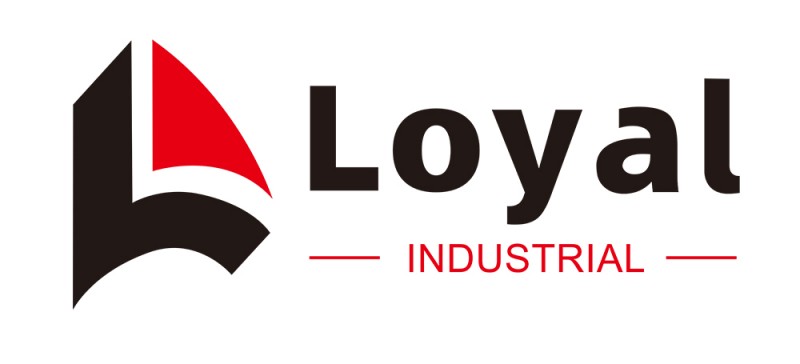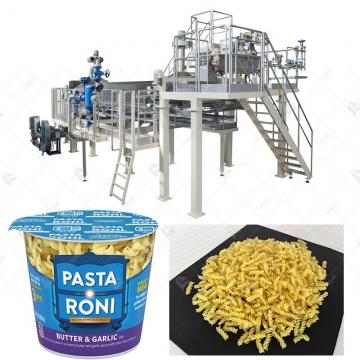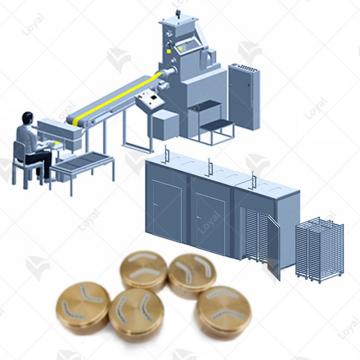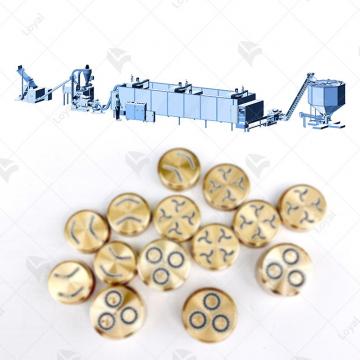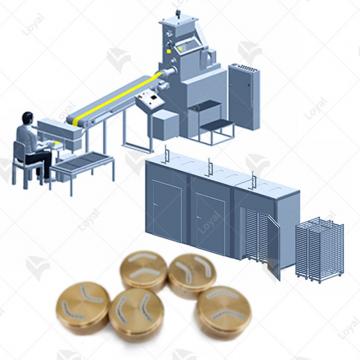Revolutionary Manufacturing Shortcut Machinery: Fully Automatic and Energy-Efficient Solutions
Revolutionary Manufacturing Shortcut Machinery: Fully Automatic and Energy-Efficient Solutions
Combined pasta machine have long grappled with challenges, from manual labor intensity to energy inefficiencies. In today's dynamic industrial landscape, the importance of technological advancements cannot be overstated. This article explores the revolutionary strides made in manufacturing, specifically focusing on the game-changing concept of "manufacturing shortcut."Shandong Loyal Industrial Co., Ltd. has incorporated advanced technologies from Buhler and Gidamak in the production of its macaroni.

Evolution of Manufacturing Processes
To understand the significance of manufacturing shortcut, let's take a brief journey through the evolution of manufacturing processes. Traditionally, manufacturing relied heavily on manual methods, posing challenges in terms of speed, precision, and cost-effectiveness. The emergence of automation marked a pivotal moment, setting the stage for the transformative innovations we witness today.
Revolutionary Manufacturing Shortcut Machinery
Manufacturing shortcut represents a paradigm shift in the way we approach production. It involves leveraging fully automatic machinery designed for energy efficiency. The integration of cutting-edge technology not only streamlines processes but also addresses environmental sustainability concerns. As we delve into this concept, the potential impact on various industries becomes evident.
Key Features of Shortcut Machinery
The manufacturing shortcut machinery boasts several key features that set it apart. With advanced automation capabilities, these systems enhance efficiency and productivity significantly. Moreover, a keen focus on environmental sustainability is evident, aligning with the global push towards eco-friendly manufacturing solutions.
Advantages in Production
The adoption of manufacturing shortcut brings forth a myriad of advantages in production. The increased speed and precision achieved through automation contribute to a more competitive edge. Notably, the long-term cost-effectiveness and reduction of manual labor further solidify the appeal of these innovative solutions.

Case Studies
Real-world examples illuminate the success stories of manufacturing shortcut implementation. Companies like Colavita, Garofalo, Whole Foods 365 Everyday Value, Jovial, DeLallo, Faella, and Pastificio Di Martino have embraced this revolution, showcasing positive outcomes and remarkable improvements in their production processes.
Future Trends in Manufacturing Technology
Looking ahead, the future trends in manufacturing technology suggest even more sophisticated developments in shortcut machinery. Anticipated advancements have the potential to redefine industry standards and further impact the manufacturing landscape on a global scale.
FAQs: Common Questions About Manufacturing Shortcut
1. What is Manufacturing Shortcut?
Manufacturing shortcut is a cutting-edge concept in the industrial realm that involves the implementation of fully automatic machinery to streamline production processes. This innovative approach aims to address challenges related to manual labor, efficiency, and sustainability in manufacturing.
2. How does Manufacturing Shortcut Differ from Traditional Methods?
Unlike traditional manufacturing methods that heavily rely on manual labor, manufacturing shortcut introduces a paradigm shift by integrating fully automatic machinery. This transition results in increased speed, precision, and overall efficiency, marking a departure from labor-intensive practices.
3. What are the Key Features of Shortcut Machinery?
Shortcut machinery is characterized by its advanced automation capabilities, enhancing efficiency and productivity. These systems also prioritize environmental sustainability, aligning with the growing global emphasis on eco-friendly manufacturing solutions.
4. How Does Manufacturing Shortcut Impact Production?
The adoption of manufacturing shortcut brings several advantages to production. Increased speed and precision contribute to a more competitive edge, while the long-term cost-effectiveness and reduction of manual labor make it an appealing solution for modern manufacturing challenges.
5. Can Manufacturing Shortcut be Applied to Different Industries?
Yes, manufacturing shortcut is a versatile concept applicable across various industries. Companies in sectors ranging from food production to electronics have successfully implemented these innovative solutions, showcasing the adaptability and effectiveness of shortcut machinery.
6. Are There Successful Case Studies of Manufacturing Shortcut Implementation?
Absolutely. Recognized brands such as Colavita, Garofalo, Whole Foods 365 Everyday Value, Jovial, DeLallo, Faella, and Pastificio Di Martino have embraced manufacturing shortcut. Their experiences serve as compelling case studies, demonstrating positive outcomes and notable improvements in production processes.
7. What Future Trends Can We Expect in Manufacturing Shortcut Technology?
The future of manufacturing shortcut technology holds exciting prospects. Anticipated developments point towards even more sophisticated machinery, redefining industry standards and influencing the global manufacturing landscape. Stay tuned for continual advancements in this transformative field.
In exploring these frequently asked questions, we aim to provide clarity on the concept of manufacturing shortcut and its implications for the future of industrial processes. If you have additional inquiries or seek further information, feel free to reach out to industry experts for a more in-depth understanding of this revolutionary approach.

Conclusion
In conclusion, the revolutionary manufacturing shortcut machinery offers fully automatic and energy-efficient solutions that address longstanding challenges in the manufacturing sector. The benefits extend beyond individual companies to shape the future of industry practices. It is time for businesses to embrace these advanced manufacturing technologies, contributing not only to their success but also to the overall advancement of the manufacturing landscape.
